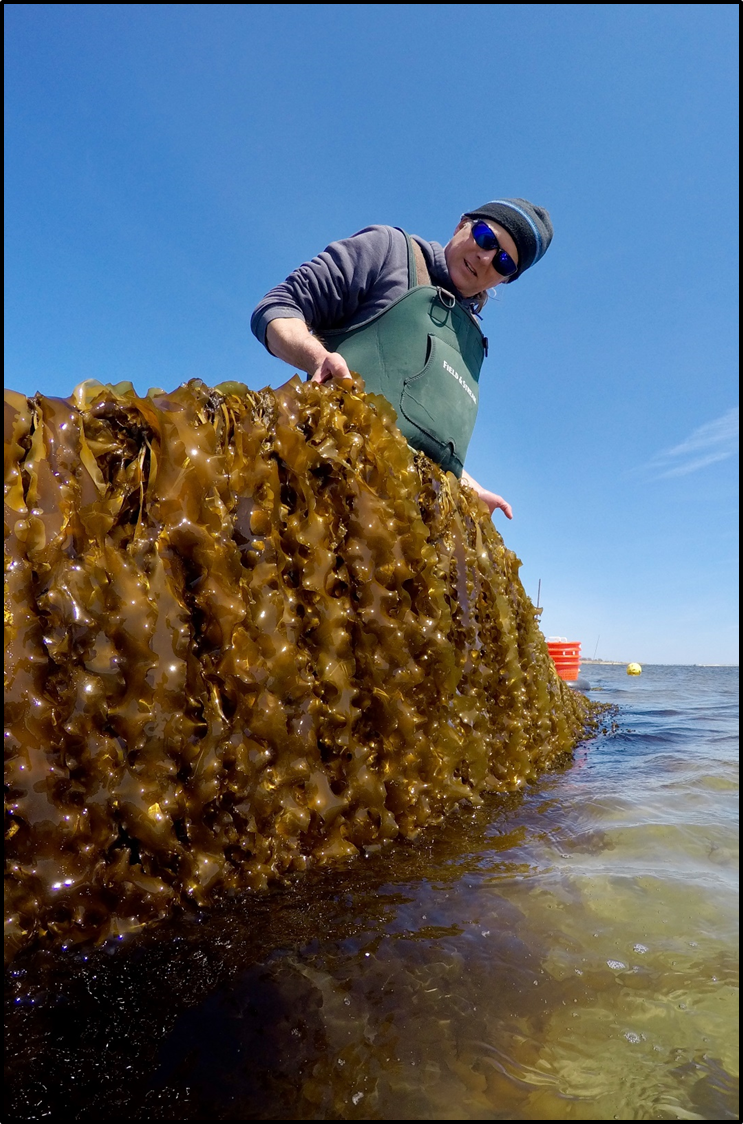Bioextraction
 The New York State Center for Clean Water Technology is engaged in a series of activities
to reduce nitrogen (N) loading to groundwater from septic systems. Still, it will
take decades for significant numbers of septic systems to be upgraded across Long
Island and it takes decades for contaminated groundwater to flow out of Long Island’s
aquifers. As such, interim measures to mitigate eutrophication in coastal waters
are required to complement on-going watershed remediation of excessive N loads. One
approach that holds promise on this front is bioextraction or the use of the nitrogen assimilatory capacity of aquatic life as a strategy for
removing N from coastal ecosystems. On this front, the Center has been exploring
two major approaches for N removal: filtering feeding bivalves and seaweeds. In both
cases, the primary approach has been growing these organisms in an aquaculture setting,
simplifying maintenance and harvest of organisms.
The New York State Center for Clean Water Technology is engaged in a series of activities
to reduce nitrogen (N) loading to groundwater from septic systems. Still, it will
take decades for significant numbers of septic systems to be upgraded across Long
Island and it takes decades for contaminated groundwater to flow out of Long Island’s
aquifers. As such, interim measures to mitigate eutrophication in coastal waters
are required to complement on-going watershed remediation of excessive N loads. One
approach that holds promise on this front is bioextraction or the use of the nitrogen assimilatory capacity of aquatic life as a strategy for
removing N from coastal ecosystems. On this front, the Center has been exploring
two major approaches for N removal: filtering feeding bivalves and seaweeds. In both
cases, the primary approach has been growing these organisms in an aquaculture setting,
simplifying maintenance and harvest of organisms.
Bivalves such as oysters, mussels, and clams filter and remove large volumes of water as they feed; a single adult oyster can filter hundreds of liters of seawater in a day. Through this process, the bivalves are removing N containing particles from the water column of estuaries and subsequently assimilating some of that N into new tissue as well as depositing N into sediments where is can be buried or even denitrified and permanently removed from the ecosystem.
 The Center has placed an even larger focus on the use of seaweeds as a means of bioextraction.
In NY, the sugar kelp, Saccharina latissima, grows during cooler months (December – May), reaching blade lengths of more than
10 feet in a single growing season. Kelp is typically grown on lines up to 200 feet
in length with up to 10 pounds of kelp produced in a single foot of line and multiple
lines deployed concurrently within a single site, thousands of pounds of biomass can
be removed annually per locale. While the commercial aquaculture of kelp is a nascent
industry, a one-acre kelp farm could remove 100 to 200 pounds of N from coastal water
annually, a removal on par with annual performance of 10 – 20 innovative and alternative
nitrogen-removing septic systems.
The Center has placed an even larger focus on the use of seaweeds as a means of bioextraction.
In NY, the sugar kelp, Saccharina latissima, grows during cooler months (December – May), reaching blade lengths of more than
10 feet in a single growing season. Kelp is typically grown on lines up to 200 feet
in length with up to 10 pounds of kelp produced in a single foot of line and multiple
lines deployed concurrently within a single site, thousands of pounds of biomass can
be removed annually per locale. While the commercial aquaculture of kelp is a nascent
industry, a one-acre kelp farm could remove 100 to 200 pounds of N from coastal water
annually, a removal on par with annual performance of 10 – 20 innovative and alternative
nitrogen-removing septic systems.
Given that the commercial market for kelp is still developing, the Center is also engaged in transforming kelp into fertilizer and specifically examining how kelp-based fertilizers might alter the trace element content of soils, fruits, and vegetables. Beyond kelp, the Center is also exploring the culturing of summer seaweeds like the red alga, Gracilaria, and the green alga, Ulva. The successful development of a warm water seaweed for aquaculture would allow for year-round bioextraction of N.
Finally, given that bivalves and seaweeds contain significantly more carbon than N, every N bioextraction project is also a carbon sequestration project that combats climate change.
